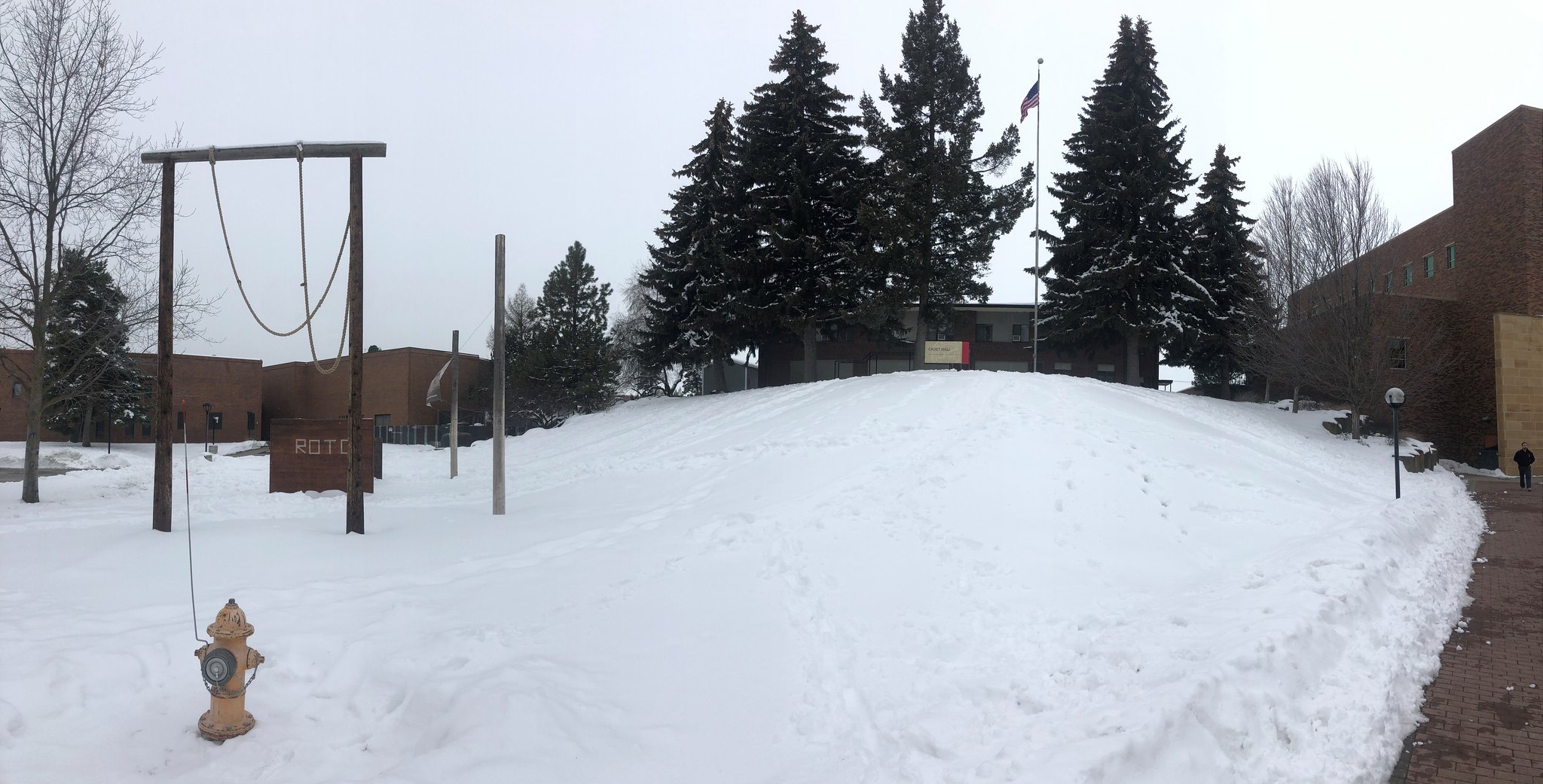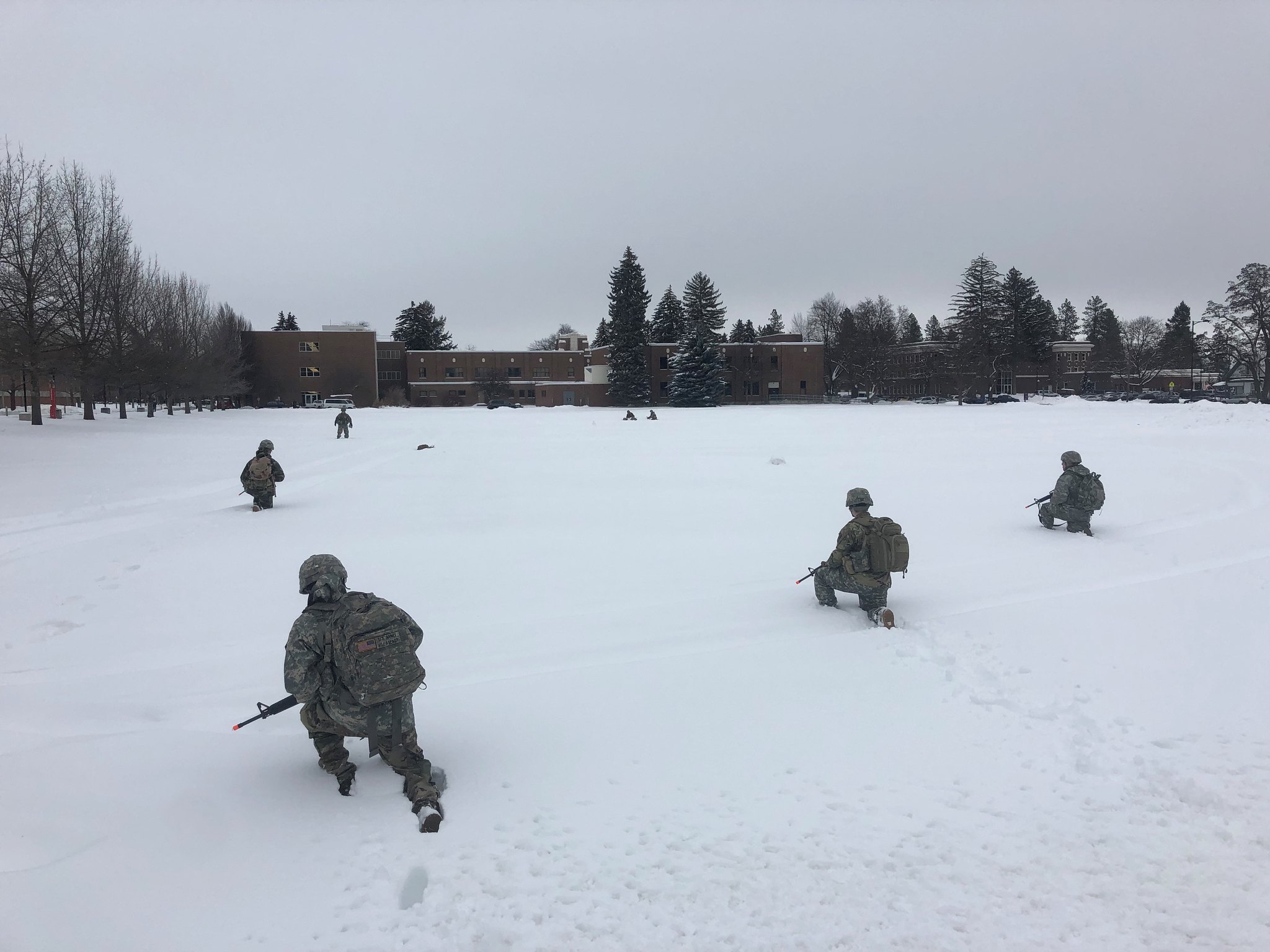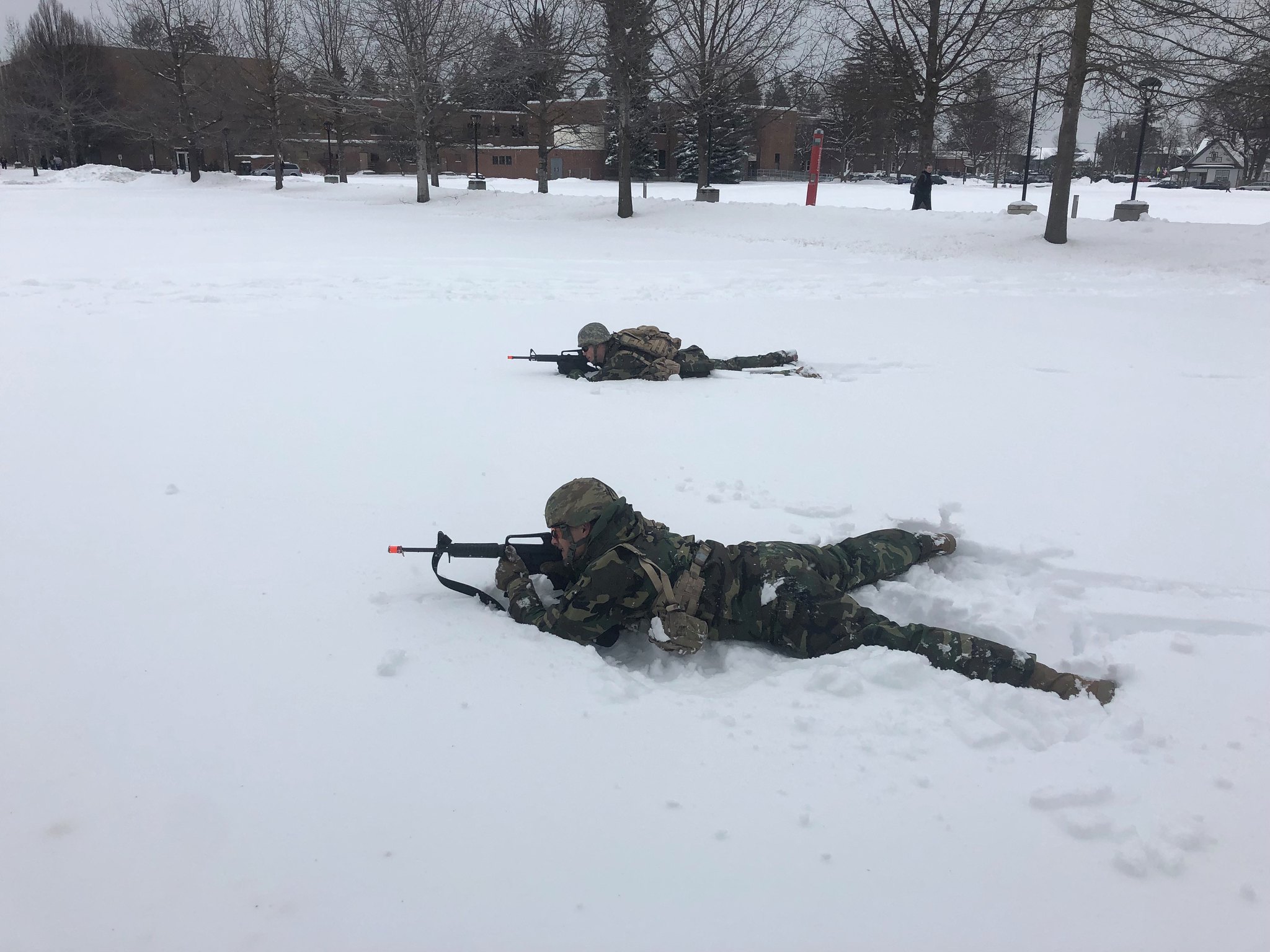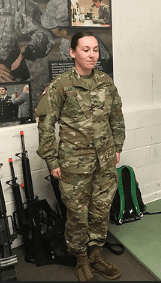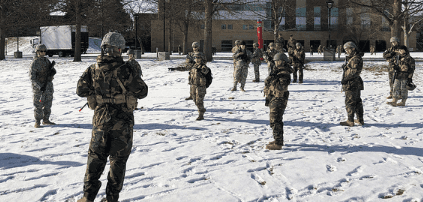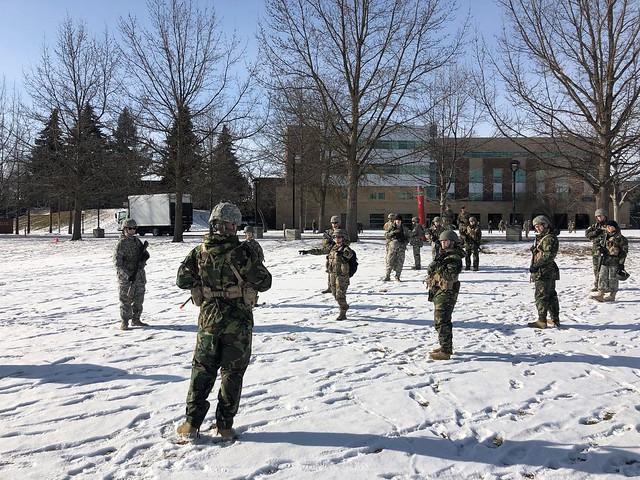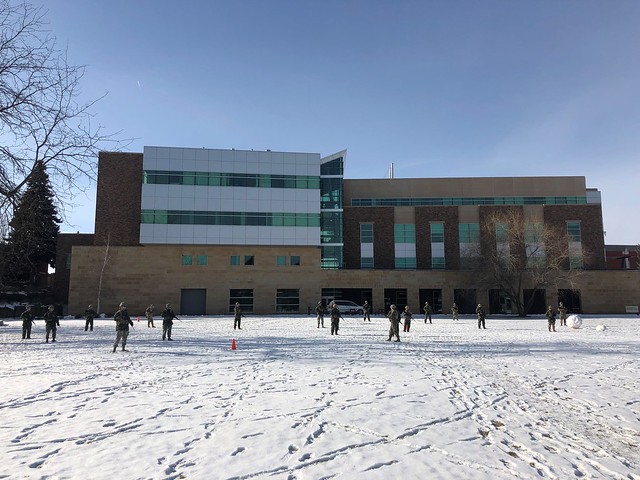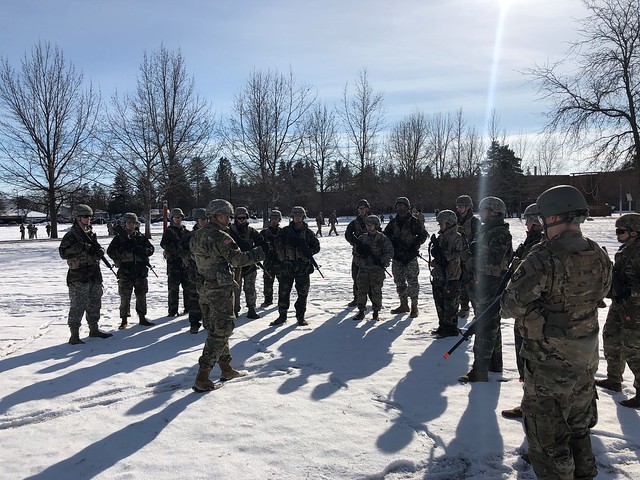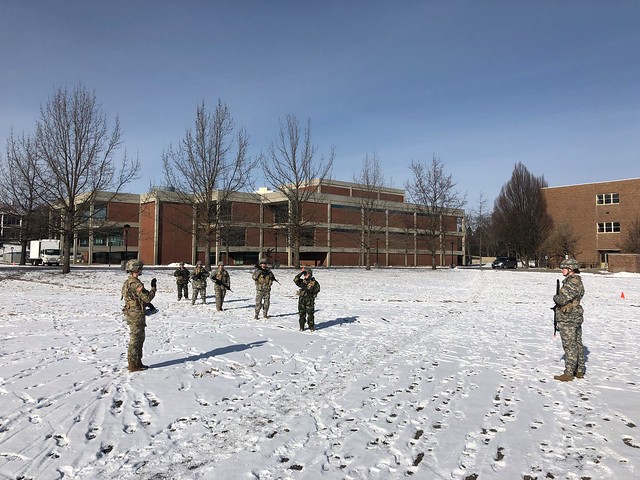On February, 21 2019, the Eastern Washington University (EWU) ROTC battalion conducted its weekly leadership lab at the Cheney Water Works (CWW).

The CWW provides the “Fighting Eagles” Cadets a forested area near the EWU campus to practice their squad operations skills they learned from previous leadership labs. Due to the heavy snow fall this winter, the Cadets were physically challenged during the lab by having to trudge through knee deep snow. With all the physical training that the Cadets do in the morning, they were able to be resilient and push right through it.
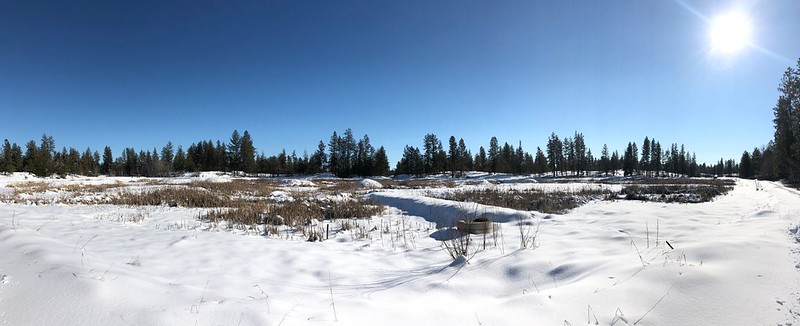 Heavy snow covers an open area at the Cheney Water Works.
Heavy snow covers an open area at the Cheney Water Works.
At first formation, the officer in charge (OIC) Cadet Erling Anderson, gave a safety brief for cold weather injuries and explained to the Cadets what they will be training on during the lab.
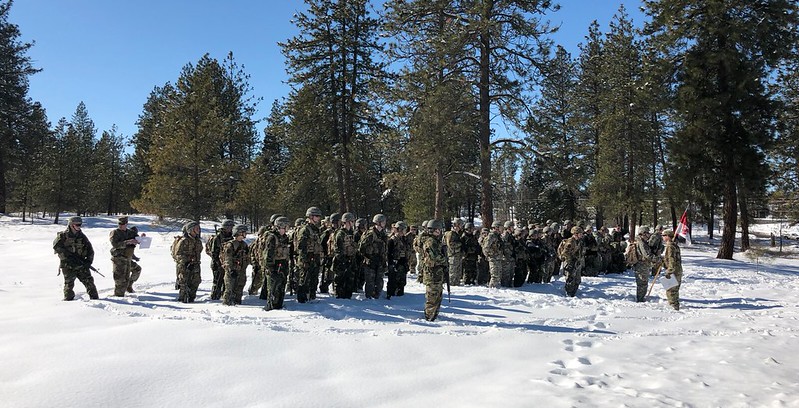 Cadet Erling Anderson (far right) briefs the Fighting Eagles Cadets prior to executing the weekly leadership lab.
Cadet Erling Anderson (far right) briefs the Fighting Eagles Cadets prior to executing the weekly leadership lab.
At this weekly leadership lab the Fighting Eagles Cadets were tested on their skills to properly conduct an ambush and an area reconnaissance mission. After first formation each squad moved to their designated area in the woods to conduct their training. Each squad was assigned an MS-IV (senior) Cadet who evaluated and helped the MS-III (Junior) Cadets conduct their mission. The MS-III Cadets had a chance to rotate through leadership roles to give them practice on how to lead a squad size element at either the ambush lane or the recon lane.
 EWU ROTC Fighting Eagles Cadets position themselves for a squad ambush.
EWU ROTC Fighting Eagles Cadets position themselves for a squad ambush.
The ambush lane is where Cadets had to position their squad on the objective where the enemy will be traveling through. The MS-III Cadet had to go through troop leading procedures (TLPs); which they have learned in their military science class from the Cadet Command NCO Instructor of the Year, Sergeant First Class( SFC) Jason Hennig. After the MS-III Cadets planned the mission they would lead their squad through the mission.
 EWU Cadets position themselves to conduct a squad ambush.
EWU Cadets position themselves to conduct a squad ambush.
Other Cadets playing the Opposing Force (OPFOR) would role play the enemy troops traveling down the road. Once the OPFOR reached the ambush site, the squad would then initiate their attack against the enemy force. After the execution of the mission the MS-IV Cadet would do an after action report (AAR), that is used to describe what the Cadet did correctly during the execution of the lane and identify areas of improvement.
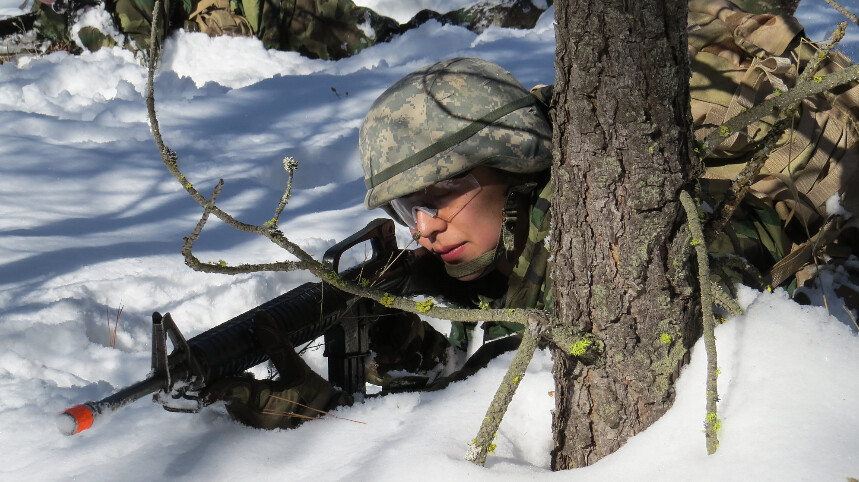 EWU ROTC Cadet prepares to engage the enemy during squad ambush training.
EWU ROTC Cadet prepares to engage the enemy during squad ambush training.
During the recon mission, Cadets had to locate an enemy force without being seen. While observing the enemy, the Cadets had to collect Priority Intelligence Requirements (PIR).
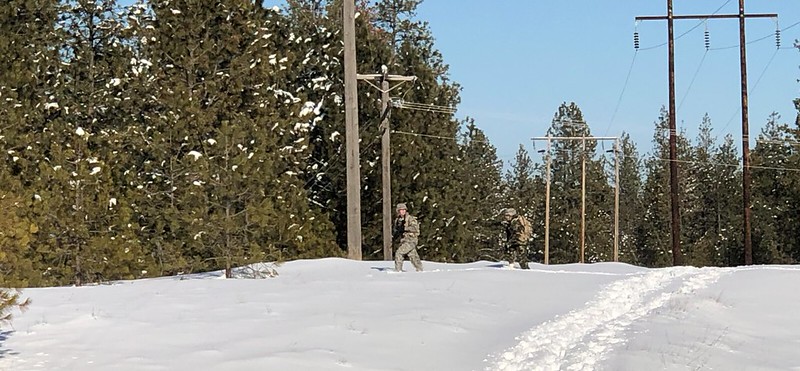 EWU ROTC Cadets cross an open area while conducting a reconnaissance mission.
EWU ROTC Cadets cross an open area while conducting a reconnaissance mission.
PIR is extremely important information that can be sent to higher command element to be used for future operations. Similar as an ambush, the MS-III Cadets had to go through TLPs to plan and then execute this mission.
 Cadet Nicholas Null (center) briefs his squad after returning from reconnaissance mission.
Cadet Nicholas Null (center) briefs his squad after returning from reconnaissance mission.
The training conducted at the Cheney Water Works will help prepare the Cadets for next month’s winter Field Training Exercise (FTX). The FTX will test the Cadets on all the skills they have learned this quarter during the leadership labs. Training basic soldier and leadership skills is important for preparing the MS-III Cadets for their upcoming attendance at Advanced Camp at Ft. Knox, Kentucky this summer. The 37-day camp is a requirement for all MS-III Cadets to pass before commissioning as an officer in the Army.
Go ROTC! Go Fighting Eags!


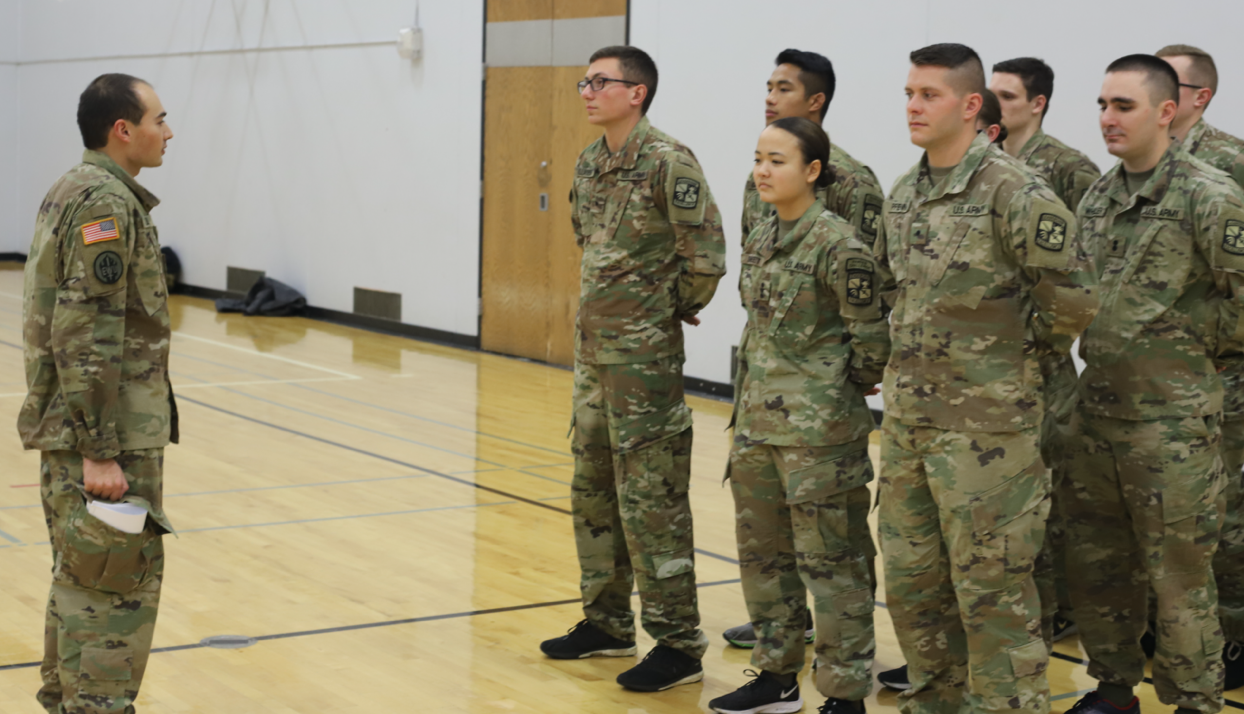
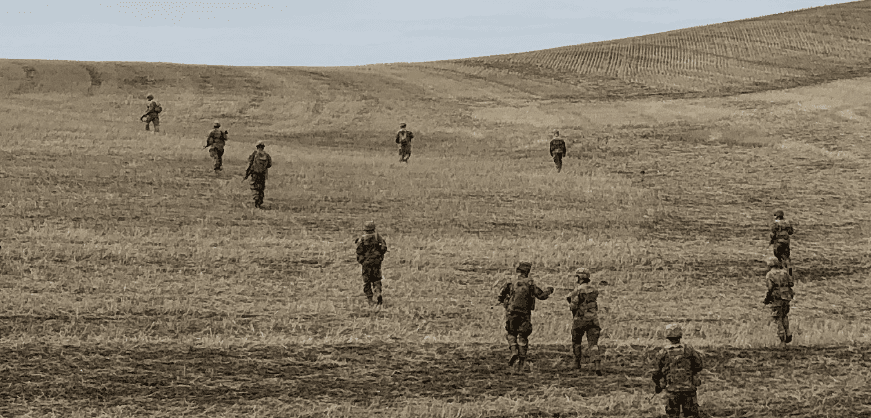
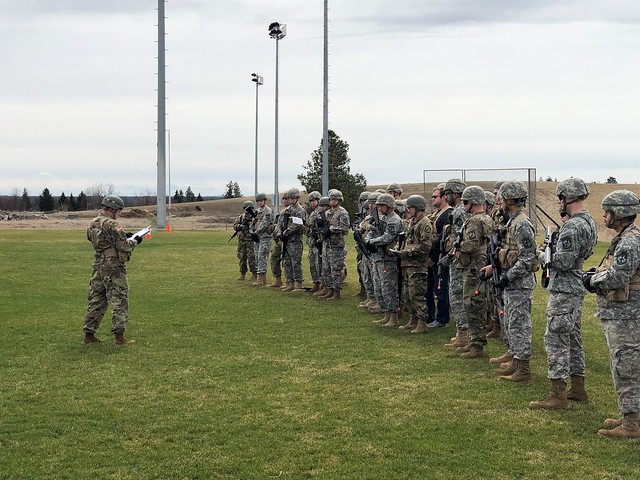





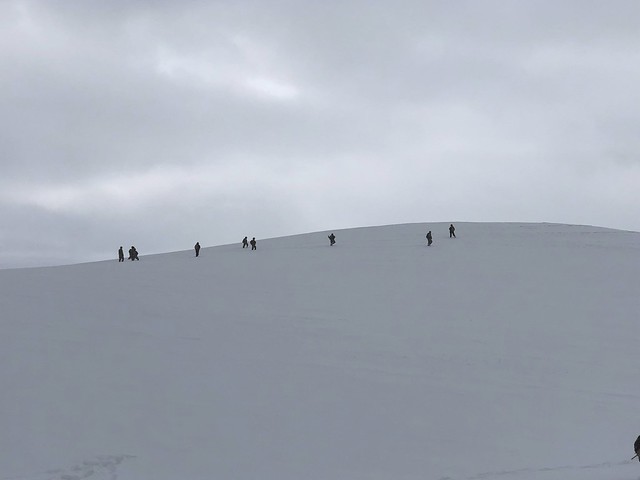
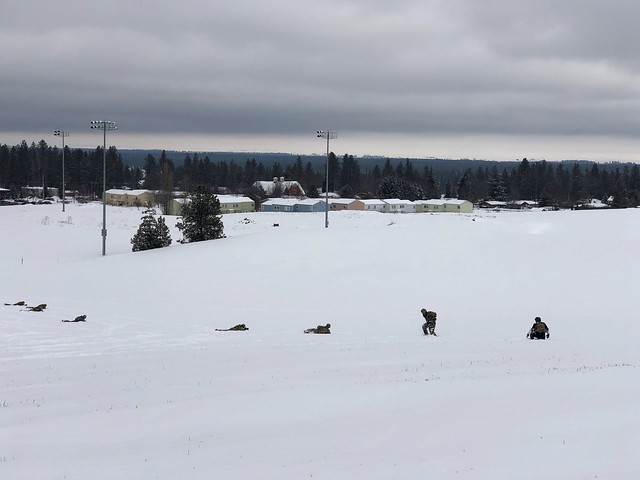

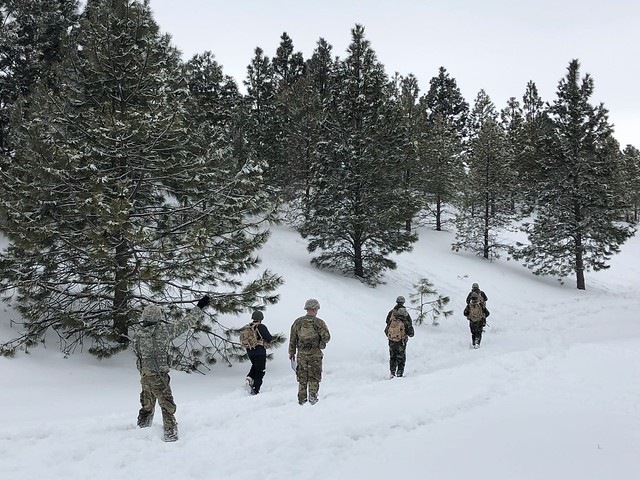

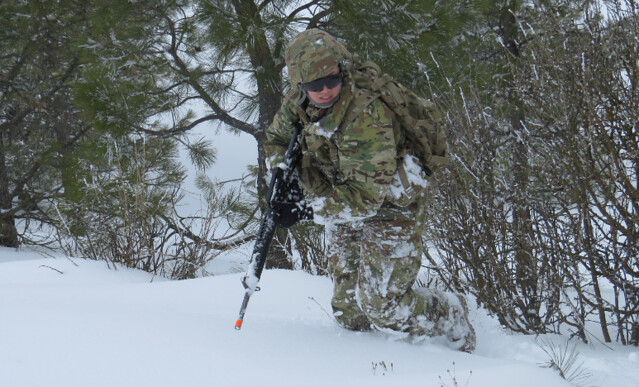
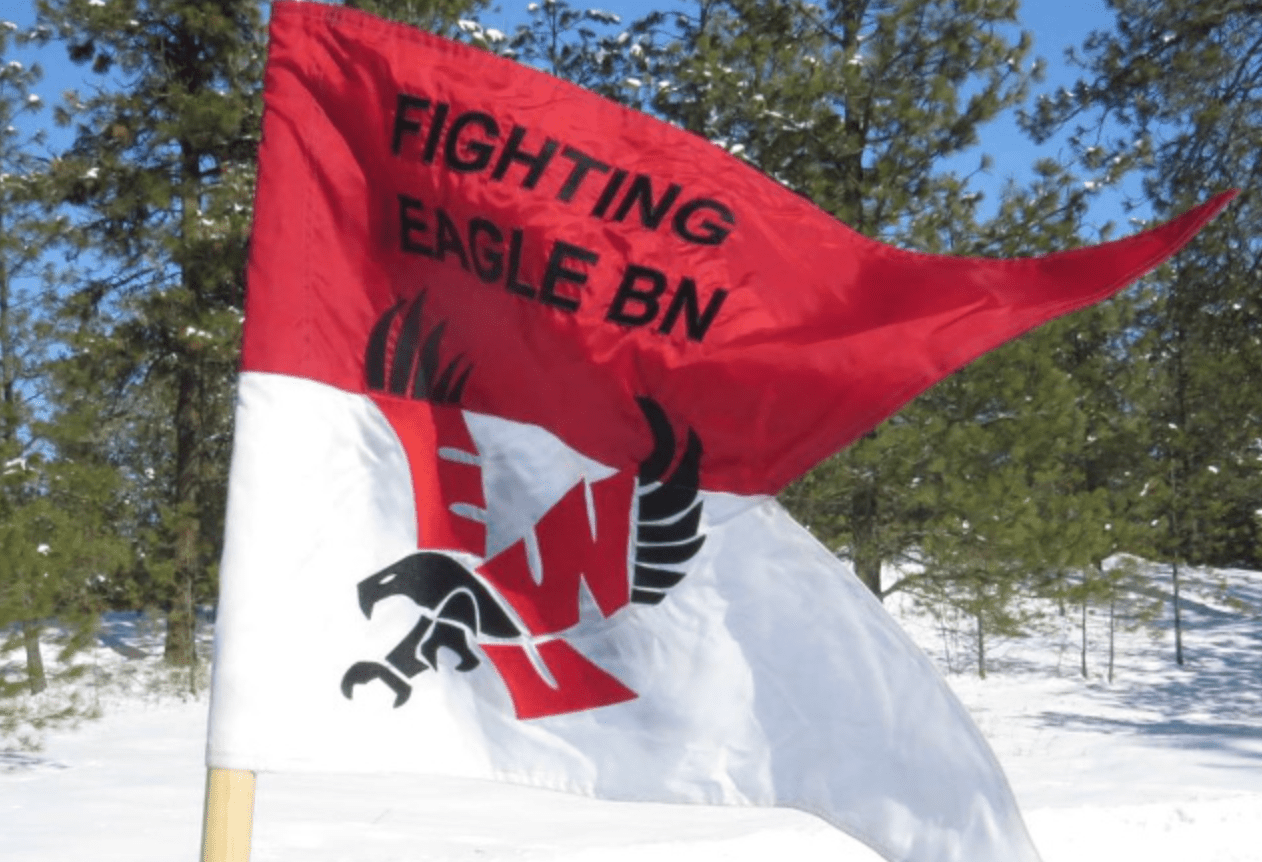

 Heavy snow covers an open area at the Cheney Water Works.
Heavy snow covers an open area at the Cheney Water Works.  Cadet Erling Anderson (far right) briefs the Fighting Eagles Cadets prior to executing the weekly leadership lab.
Cadet Erling Anderson (far right) briefs the Fighting Eagles Cadets prior to executing the weekly leadership lab.  EWU ROTC Fighting Eagles Cadets position themselves for a squad ambush.
EWU ROTC Fighting Eagles Cadets position themselves for a squad ambush. EWU Cadets position themselves to conduct a squad ambush.
EWU Cadets position themselves to conduct a squad ambush. EWU ROTC Cadet prepares to engage the enemy during squad ambush training.
EWU ROTC Cadet prepares to engage the enemy during squad ambush training. EWU ROTC Cadets cross an open area while conducting a reconnaissance mission.
EWU ROTC Cadets cross an open area while conducting a reconnaissance mission. Cadet Nicholas Null (center) briefs his squad after returning from reconnaissance mission.
Cadet Nicholas Null (center) briefs his squad after returning from reconnaissance mission.
